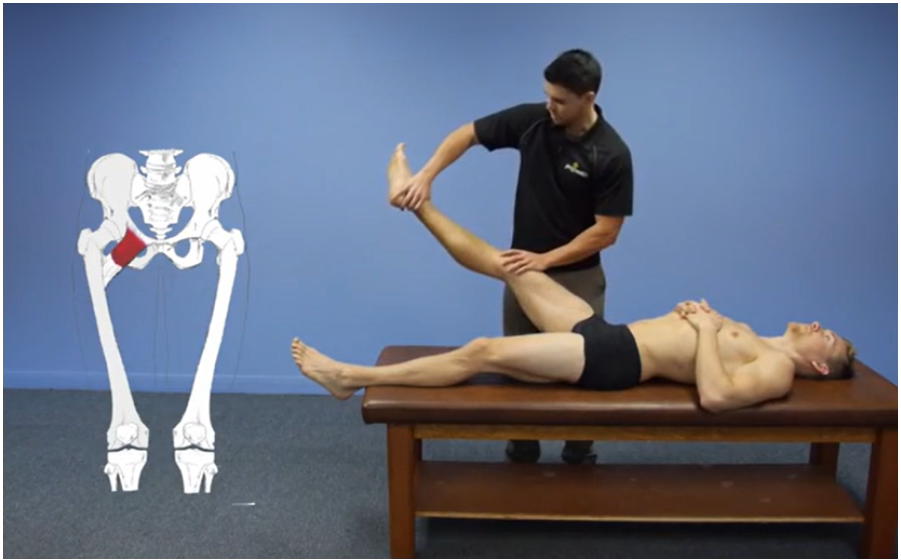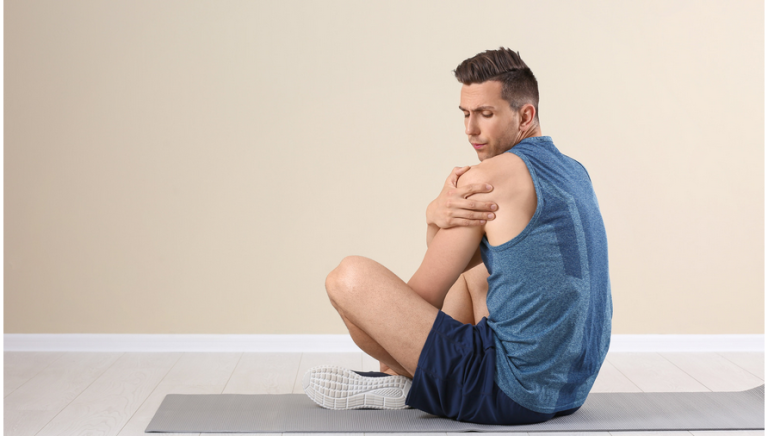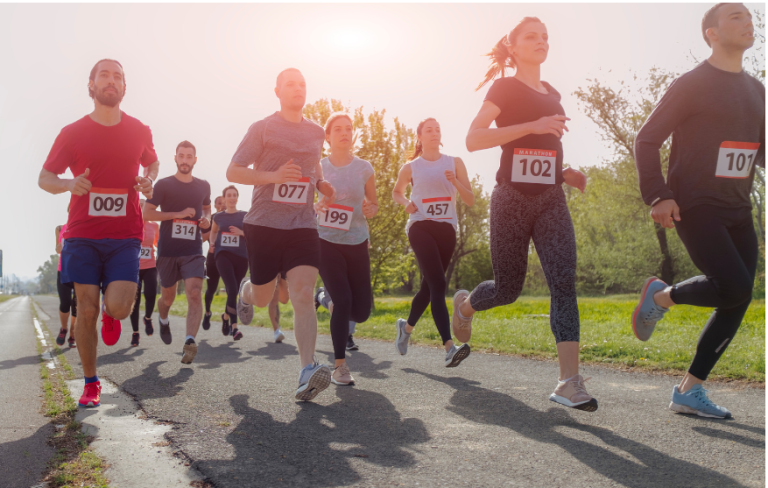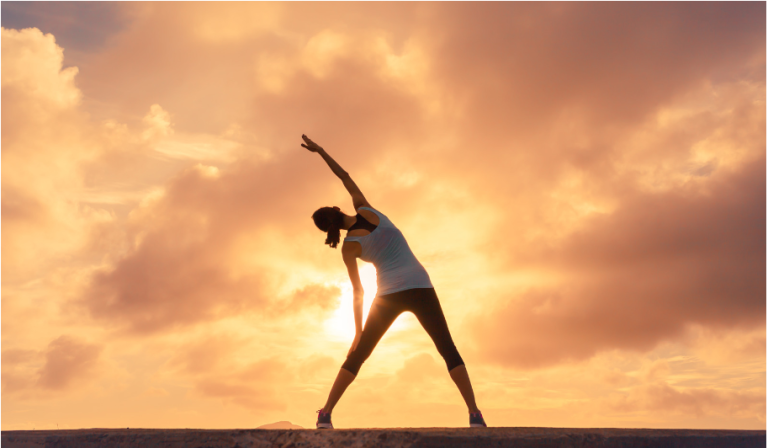
Stretching Pectineus Muscle: For Hip Flexibility, and Pain Relief

Stretching the pectineus muscle is essential to any lower-body workout routine. The pectineus muscle is a flat, quadrangular muscle in the groin and upper thigh. It is part of the adductor muscle group, flexes the hip, and moves the leg towards the body. Various factors, including overuse, injury, or poor posture, can cause tightness or pain in the pectineus muscle. To alleviate this, knowing how to stretch the pectineus muscle is important.
The anatomy of the Pectineus Muscle is located in the upper thigh and is one of the smallest muscles in the adductor group. It originates from the front of the pubic bone and inserts into the upper part of the femur bone. The muscle is responsible for hip flexion and adduction. It is also involved in stabilizing the hip joint during movement.
Identifying Pectineus Muscle Pain is typically felt in the groin, inner thigh, or front top of the thigh. Activities involving hip flexion or adduction, such as running, jumping, or climbing stairs, can make the pain either sharp or dull and worsen. Various factors, including overuse, injury, or poor posture, can cause pectineus muscle pain. It is important to identify the underlying cause of the pain, such as an injury to the pectineus muscle, to develop an effective treatment plan. Stretching the Pectineus Muscle can help alleviate the pain and prevent further injury.
Key Takeaways
- Stretching the pectineus muscle is important to any lower body workout routine.
- The pectineus muscle is a small muscle in the groin and upper thigh responsible for hip flexion and adduction.
- Various factors can cause pectineus muscle pain, which is identified as pain in the groin, inner thigh, or front top of the thigh.
Anatomy of the Pectineus Muscle
Muscle Structure
The pectineus muscle is a flat, quadrangular muscle located in the upper interior of the thigh. It is the most superior attachment of all the thigh adductors and extends from the pubis to the area just below the lesser trochanter of the femur. The muscle is relatively small compared to other muscles in the thigh and has a short tendon that attaches to the femur.
The femoral nerve innervates the pectineus muscle and is a part of the adductor muscle group. It is located on the medial side of the thigh, alongside four primary large muscles, including the adductor longus, adductor brevis, adductor magnus, and gracilis muscles.
Function and Movement
The pectineus muscle is essential in hip flexion and adduction, allowing the leg to move towards the body. It also aids in hip rotation and stabilization, which is necessary for maintaining balance and alignment.
During hip flexion, the pectineus muscle works with the iliopsoas muscle to lift the leg towards the body. The muscle also works with the other adductor muscles to move the leg toward the body’s midline during adduction.
Stretching the pectineus muscle is essential for maintaining flexibility in the groin and thigh area. Tightness in the pectineus muscle can lead to pain and discomfort in the groin and inner thigh, affecting the stride and rotation of the thigh. Therefore, regular stretching of the pectineus muscle is recommended to prevent injury and maintain flexibility.
The pectineus muscle is a small but powerful muscle that plays an essential role in hip flexion, adduction, and rotation. Understanding the anatomy and function of this muscle is crucial for maintaining proper movement and preventing injury.
Identifying Pectineus Muscle Pain
The pectineus muscle is located on the medial thigh and assists in hip adduction and flexion. Several symptoms can identify pain in this muscle and have a few common causes.
Symptoms
Pectineus muscle pain can cause discomfort in the groin area and is often localized to the front of the hip. Pain may also radiate down the inner thigh. The affected area may be tender to the touch and feel stiff or tight, indicating an injury to the pectineus muscle.
Common Causes
Pectineus muscle pain can be caused by overuse or strain, especially in athletes who participate in sports that require sudden changes in direction or jumping. It can also be caused by sitting for long periods or poor posture. Women may experience pectineus pain during pregnancy due to the added weight and pressure on the pelvic region.
To prevent pectineus muscle pain, stretching the muscle regularly and maintaining proper posture is recommended. If pain persists, it is important to seek medical attention to rule out any underlying conditions.
Related Posts:
Pectineus Muscle Injuries
The pectineus muscle is one of the muscles that can be injured during physical activity. Injuries to this muscle can cause pain, discomfort, and limited mobility. It is important to understand the types of injuries that can occur to the pectineus muscle and the recovery and healing process.
Strains and Tears
The pectineus muscle can be strained or torn due to overuse or sudden movements. A strain is a partial muscle tear, while a tear is a complete rupture. Symptoms of a pectineus muscle strain or tear include pain in the groin area, tenderness, swelling, and difficulty moving the leg.
The severity of the injury will determine the recovery time. Mild strains can take a few days to heal, while severe tears can take several weeks or months. Resting the injured muscle and avoiding any activities that may aggravate the injury is important.
Recovery and Healing
Recovery and healing for a pectineus muscle injury involves a combination of rest, stretching, and physical therapy. Resting the injured muscle is important to allow the muscle to heal. Stretching can help improve flexibility and range of motion. Physical therapy can help strengthen the muscles and prevent future injuries.
It is important to increase activity levels as the muscle heals gradually. Returning to physical activity too quickly can cause re-injury or further damage to the muscle.
Related Posts:
How to Stretch Pectineus Muscle: Stretching Techniques
The pectineus muscle is small in the groin area and can become tight due to various causes, including overuse, injury, or prolonged sitting. Stretching the pectineus muscle, a flat muscle in the upper thigh can help increase flexibility and reduce tension in the muscle. Here are some effective stretching techniques for the pectineus muscle, which plays a crucial role in the rotation of the thigh.
1. Basic Stretches
Passage_1 provides a variety of effective groin and adductor stretches to help improve flexibility and mobility in these muscle groups. One basic stretch for the pectineus muscle involves sitting on the floor with your legs extended before you. Bend one knee and place the foot on the floor beside the opposite inner thigh. Lean forward and reach for the toes of the extended leg, feeling the stretch in the groin area. Hold the stretch for about 20 to 30 seconds and repeat on the other side.
Another basic stretch involves lying on your back with your knees bent and feet flat on the floor. Cross one ankle over the opposite knee and gently pull the bent leg towards your chest, feeling the stretch in the hip area.
Hold this stretch for about 20 to 30 seconds and repeat on the other side.
2. Yoga Poses
Pigeon Pose:
In addition to these basic stretches, certain yoga poses can also be beneficial for targeting the pectineus muscle. One such pose is the Pigeon Pose, which involves starting in a downward-facing dog position and bringing one knee forward towards the opposite wrist. Lower the opposite hip to the floor and stretch the other leg behind you. Hold the stretch for about 20 to 30 seconds and repeat on the other side.
Bound Angle Pose:
The bound-angle pose is another yoga pose that can help stretch the pectineus muscle. To perform this pose:
- Sit on the floor with your knees bent and your feet together.
- Gently press the knees towards the floor, feeling the stretch in the groin area.
- Hold this stretch for about 20 to 30 seconds.
These stretches and poses can be incorporated into your routine to enhance flexibility and strength in the groin and adductor muscles.
3. Advanced Techniques
Using a stretching strap can be helpful for those looking for more advanced techniques. One such exercise involves lying on your back with your knees bent and feet flat on the floor. Loop a stretching strap around the arch of one foot and straighten the leg towards the ceiling, feeling the stretch in the hamstring and hip area. Hold the stretch for 15-30 seconds and repeat on the other side.
Another advanced technique involves using a foam roller to massage and stretch the pectineus muscle. Lie on your side with the foam roller under the hip and slowly roll back and forth, feeling the stretch in the groin area, which can help reduce back pain.
Remember to always listen to your body and never push past your limits. It is important to feel the stretch, but not to the point of pain, and keep your back properly aligned to avoid further injury.
Related Posts:
- Fascia Stretching Exercises | Unlock Your Flexibility
- 7 Effective Stretching Strap Exercises for Flexibility and Mobility
Strengthening and Conditioning
Strengthening and conditioning the pectineus muscle can help improve overall hip stability, reduce knee pain, and enhance overall performance. Here are some exercises that can help achieve these goals.
Exercises for Stability
Stability exercises can help strengthen the pectineus muscle and improve overall hip stability, benefiting the hip flexors. One such exercise is the single-leg balance. To perform this exercise:
- Stand on one leg with the knee slightly bent and the foot flat on the ground.
- Hold this position for 30 seconds and then switch to the other leg.
- Repeat this exercise for 3-5 sets.
Another exercise that can help improve stability is the hip bridge. Lie on your back with your knees bent and feet flat on the ground. Lift your hips towards the ceiling while squeezing your glutes and engaging your core. Hold this position for a few seconds, then lower your hips. Repeat this exercise for 3-5 sets.
Building Muscle Endurance
Building muscle endurance can help improve overall performance and reduce the risk of injury. One such exercise is the clamshell. To perform this exercise:
- Lie on your side with your knees bent and feet together.
- Lift your top knee towards the ceiling while keeping your feet together.
- Hold this position for a few seconds, then lower your knee.
- Repeat this exercise for 3-5 sets on each side, ensuring you keep your back straight and avoiding any movement that may cause pain in the lower back.
Another exercise that can help build muscle endurance is the lateral lunge. Stand with your feet shoulder-width apart and take a big step to the side with one foot. Bend your knee and push your hips back as you lower your body towards the ground. Push off with your foot to return to the starting position, keeping your back straight to protect your lower back. Repeat this exercise for 3-5 sets on each side.
Incorporating these strengthening and conditioning exercises into your workout routine can help strengthen your pectineus muscle, improve your overall hip stability, and enhance your overall performance.
Prevention and Management of Pectineus Pain
The pectineus muscle is an important muscle that connects the hip to the thigh bone. Overuse or injury to this muscle can cause pain and discomfort. Here are some ways to prevent and manage pectineus pain.
Lifestyle Adjustments
One of the best ways to prevent pectineus pain is to maintain an active lifestyle. Regular exercise and stretching can improve flexibility and reduce the risk of injury. It is also important to avoid overexertion and to take breaks when needed.
In addition, certain lifestyle adjustments can help manage pectineus pain. Applying ice to the affected area can help reduce inflammation and pain. Taking over-the-counter NSAIDs, such as ibuprofen, can also help manage pain associated with an injury to the pectineus muscle.
Professional Treatments
If pectineus pain persists, indicating a potential injury to the pectineus muscle, it may be necessary to seek professional treatment. A physiotherapist can help identify the cause of the pain and develop an appropriate treatment plan. This may include exercises to strengthen the muscle and improve flexibility and manual therapy to reduce pain and inflammation.
In some cases, more advanced treatments may be necessary. These may include injections to reduce pain and inflammation or surgery to repair a torn muscle.
Related Posts:
Frequently Asked Questions
What are the common symptoms indicating pectineus muscle tightness?
When the pectineus muscle is tight or strained, it can cause a range of symptoms, including pain in the groin area, inner thigh, or front top of the thigh. Pain may also be felt during walking, running, or climbing stairs. In some cases, individuals may also experience weakness or stiffness in the affected area.
Which stretches are effective for alleviating pain in the pectineus muscle?
Stretching can be an effective way to alleviate pain and tightness in the pectineus muscle, enhancing the rotation of the thigh. Some recommended stretches include the butterfly stretch, the seated straddle stretch, and the pigeon pose. Stretching slowly and gently is important, holding each stretch for at least 30 seconds.
How can yoga be used to target and stretch the pectineus muscle?
Yoga can be a great way to target and stretch the pectineus muscle. Some recommended yoga poses include the lizard pose, the half pigeon pose, and the triangle pose. These poses can help to stretch the inner thigh and groin area, promoting flexibility and reducing pain and discomfort.
What are the typical causes of pectineus muscle tightness and discomfort?
Various factors, including overuse, muscle strain, or injury, can cause pectineus muscle tightness and discomfort. Individuals who participate in activities that require repeated hip flexion and adduction, such as running or cycling, may be at increased risk of developing pectineus muscle tightness and discomfort.
What is the usual recovery time for a strained pectineus muscle?
The recovery time for a strained pectineus muscle can vary depending on the severity of the strain. Mild strains may heal within a few days or weeks with rest and conservative treatment, while more severe strains may require several weeks or months of rehabilitation.
How does pectineus pain present differently in females?
Pectineus pain may present differently in females due to differences in anatomy and physiology. Females may be more prone to developing pectineus pain due to wider hips and greater hip mobility. Additionally, hormonal changes during the menstrual cycle can impact the severity of pectineus pain in females.



